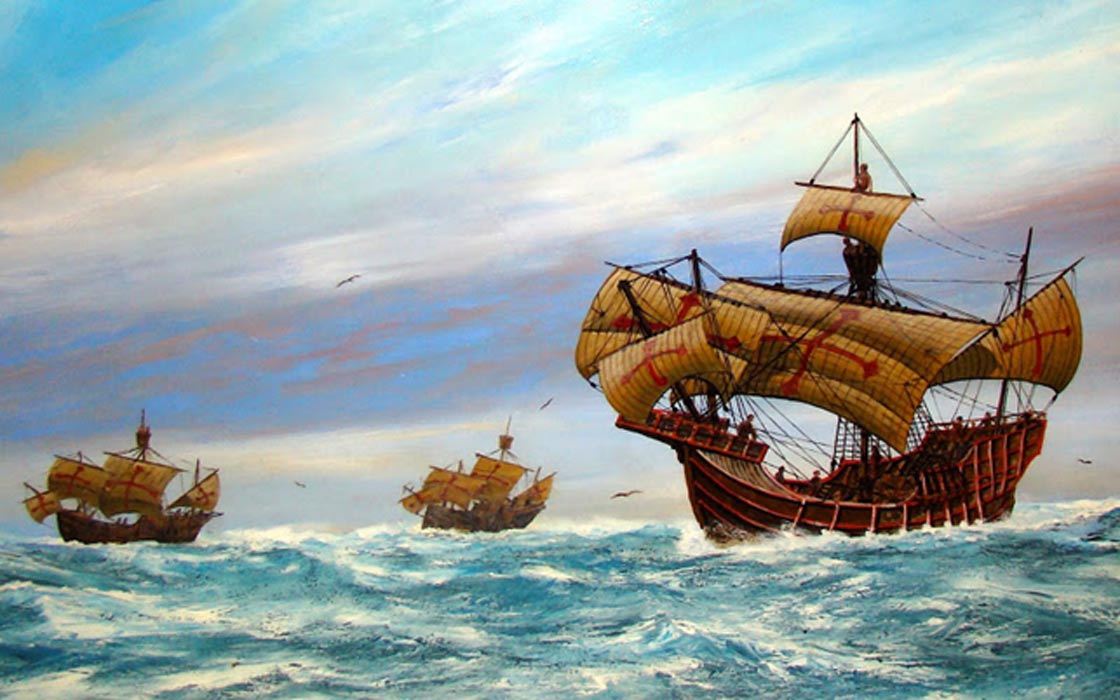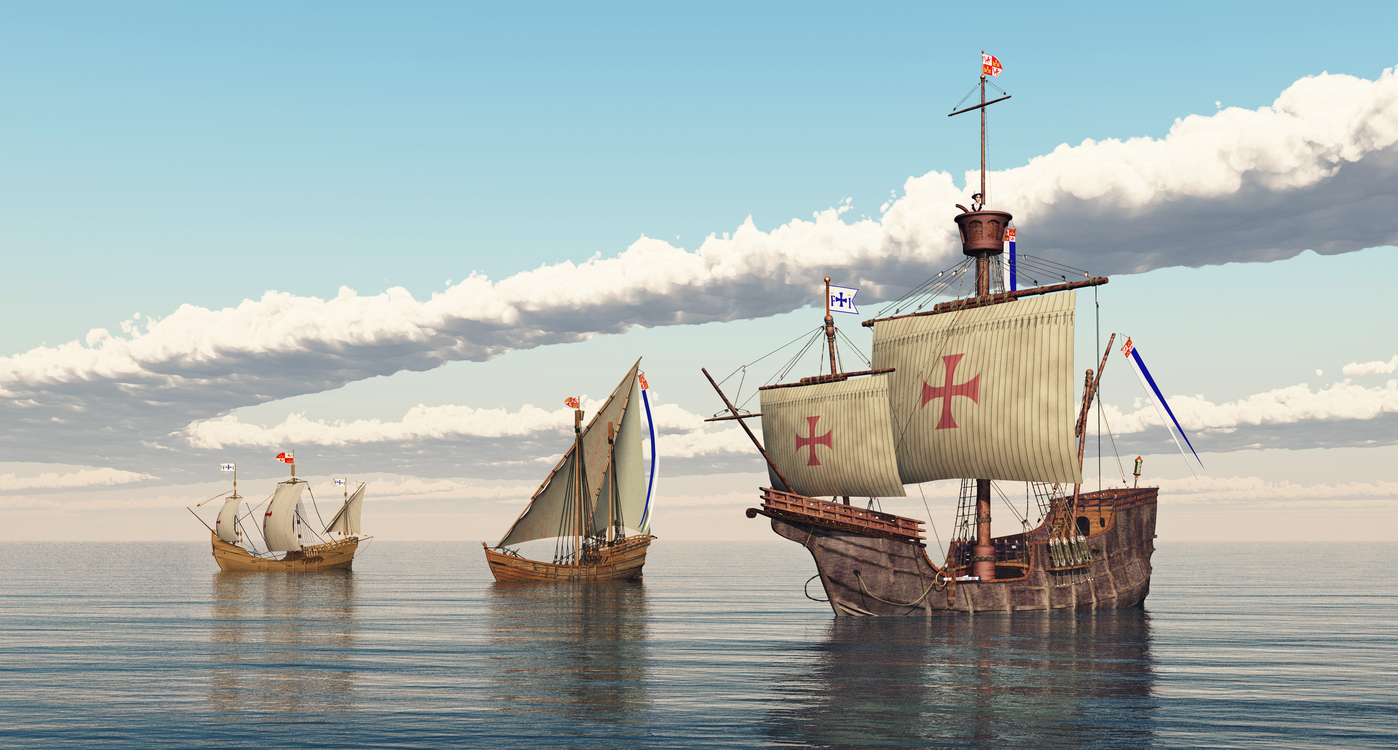

The bulkier Santa Maria, which was a 110-ton cargo ship called a nau, ran aground on Christmas Day 1492 and had to be abandoned. This proved critical when Columbus needed to navigate the shallow island coastlines near modern-day Cuba. Their lightweight design and rounded bottom meant that they rode high in the water. Small caravels like the Niña and Pinta could only carry between 40 and 50 tons and were crewed by fewer than 30 sailors each.

Small Ships Offered Advantages-But Also Discomforts

The new position allowed for far greater control. In the 14th-century caravels popular in the Mediterranean, the rudder was still on the side, says Castro, like Viking ships. In addition to their versatile rigging options, 15th-century caravels moved the rudder to the rear center of the ship. That rigging combination made ships like the Niña and the Pinta some of the best sailing vessels of their time.
#PINTA NINA AND SANTA MARIA UPDATE#
The versatile caravel could speed south along the coast and easily return to shore against the wind.įor Columbus’s maiden journey, he used a Spanish update to the caravel known as the caravela redonda, a three-masted ship where the first two masts were rigged with conventional square sails for open-ocean speed, and a third was rigged with a lateen sail for coastal maneuverability. The lateen-rigged caravels were critical in the Portuguese voyages to sub-Saharan African, where strong coastal winds blow north to south. “You can point the bow of the caravel with an angle of just 20 degrees off the wind and still get enough lift on the outer edge of the sail to propel forward.” “Lateen sails are almost like wings,” says Castro. Luis Filipe Viera de Castro, a nautical archeologist at Texas A&M University, says that the earlier Portuguese caravels, known as the caravela latina, were rigged with lateen (triangular) sails that hung at 45-degree angle to the deck. Though only two of Columbus’s ships ended up being caravels, Isabella’s decree speaks to the popularity of the vessel during the 15th-century “ Age of Discovery.” Starting with Portuguese explorations of the African coast in the mid-1400s, caravels were prized for their sleek, lightweight hull and their uncanny ability to sail into the wind. Caravels Were Cutting Edge in the 15th Century The caravels of Christopher Columbus, the Nina, Pinta and Santa Maria. When the royal decree went out in 1492 from Queen Isabella of Spain to fund Columbus’s first voyage, it read, “By these presents, we dispatch the noble man Christoforus Colón with three equipped caravels over the Ocean Seas toward the regions of India for certain reasons and purposes.”

READ MORE: Why Columbus Day Courts Controversy on October 12 that land had been sighted.Ĭolumbus hadn’t found a western route to India, of course, but his success in crossing the Atlantic was due in large part to the ships he chose for the perilous voyage, particularly the diminutive Niña and Pinta, which were a speedy type of ship called a caravel. With the men close to mutiny against their “foreign” captain, Columbus was about to turn back when the cry went out at 2 a.m. The Santa Maria, Columbus’s flagship, was a larger, heavier cargo ship.įor 35 days, Columbus and his crew of 86 Spanish sailors sailed westward searching for a passage to China and India. Two of the ships, the Niña and Pinta, were tiny by today’s standards-only 50 to 70 feet from bow to stern-but prized for their speed and maneuverability. Secondly, the caravel had about twenty crew members, who slept on the deck and would go below only if the weather was bad.On August 3, 1492, Christopher Columbus and his crew set sail from the port of Palos in southern Spain on three vessels: la Santa Clara (Niña), la Pinta and la Santa Gallega (Santa Maria). On the other hand, Caravel Santa Maria, they were able to explore shallow bays and the mouths of rivers.Ī carvel was square-rigged on its foremasts and mainmasts, therefore, Caravel Santa Maria isled a latten sail on the mizzen to help in tracking. The Niña, the Pinta were caravels, with a shallower draft than a nao and did not have much cargo space. Most importantly, she was able to carry a lot of cargo, and it was able to stand up well in bad weather. In addition, Santa Maria was a nao, was a bit of a tub, and was not able to go near the coastline. Nevertheless, Caravel Santa Maria had 52 men aboard while his other two ships, the Nina and Pinta were each crewed by 18 men. Therefore, Columbus sailed from Palos de la Frontera on 3 August, 1492. Three caravel sailing ship of Christopher ColumbusĬhristopher Columbus had three ships on his first voyage, the Niña, the Pinta, and the Santa Maria. Description The Caravel: Santa Maria, Pinta and Nina


 0 kommentar(er)
0 kommentar(er)
